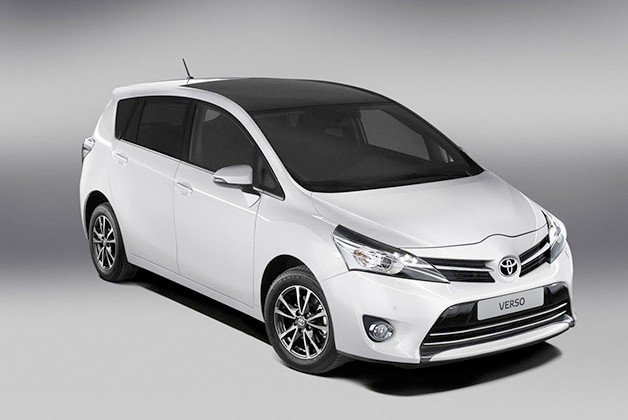The mid-cycle changes include more than 300 new parts with threefold aims: bringing the exterior design in line with the just-refreshed Toyota Auris, upgrading the fit and finish and improving the driving dynamics.
That means a redesigned nose with elements that emphasize the length and width of the car, like narrower headlights with daytime LEDs, tweaked taillamps above a rear bumper with an integrated diffuser, and in a reversal of trend, smaller door mirrors with integrated turn signals. Inside, a black satin finish and soft-touch surfaces ease up the eye and finger appeal, highlights are noted in satin chrome trim, lighting and graphics have been harmonized and been given better dimmer switch controls. There are also new seat fabrics and colors, and Nappa leather makes an appearance in some Verso models.
Engines get a little extra engineering, too. The 2.0-liter, 175-horsepower D-4D engine is quieter and provides more torque at low rpm, the 2.2-liter D-CAT diesel puts out 148 hp, and both diesels get higher tow ratings. On the gasoline side, 1.6-liter and 1.8-liter Valvematics remain available. All of them will make better use of their power through the Verso's increased rigidity, an effect of more welding points used in production, and noise and vibration have been decreased through the use of more sound-deadening in the A-pillars and bulkhead.
Related News



